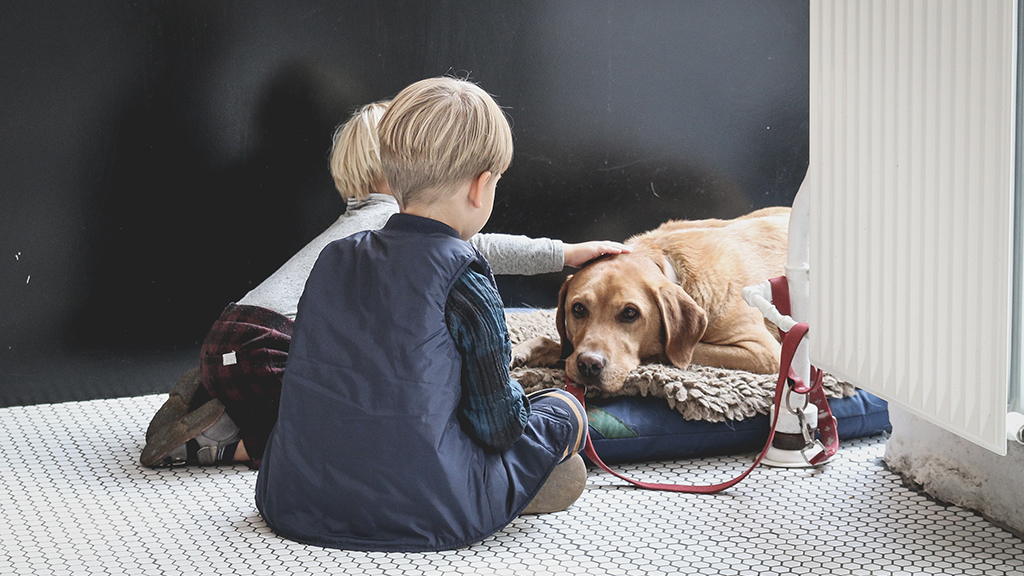Coordination between primary care doctors and speech therapists is vital in early detection of children with autism
Avoiding eye contact with adults, not pointing and lack of expressiveness are some of the warning signs in a baby with this disorder
When a baby makes little visual contact with adult faces in the first six months of life, when she makes no eye contact at the age of eight months, when she does not pay attention to objects surrounding her from six to twelve months, or when she doesn’t point (which is one of children’s early communicative behaviours), she may have ASD. For Igualada, “primary care professionals in medical centres must be able to recognize these warning signs to ensure early intervention in communication and language pathologies”.
In Spain, there are speech therapists in early intervention centres specialized in development disorders to help children up to the age of six. Alfonso Igualada explains that “it is crucial to have good coordination between health services, such as general practitioners and neuropaediatricians, and early intervention centres to ensure that ASD is detected at an early stage”.
Coordination between early intervention centres must also ensure that the information is passed on to schools. In every classroom of children aged between four and five, there are two with serious language disorders of unknown cause. Igualada argues that there should be speech therapists in schools.
ASD warning signs
Alfonso Igualada describes some of the signs of ASD that should alert health and language professionals.
Communication
-
The child does not:
-
Look at adults’ faces in the first six months of life;
-
Follow adults’ eye gaze when they look elsewhere, at around eight months;
-
Pay attention to objects and events along with adults, between the age of six and 12 months; or
-
Point.
-
Perception
-
The child does not:
-
React to environmental sounds;
-
React to frequent words, like mummy or daddy; or
-
Distinguish between known words.
-
Expression
-
Crying does not diminish and vocalization does not improve. During their first six months, children develop the ability to vocalize with different intonations, thereby crying less.
-
The child does not:
-
Repeat sounds;
-
Relate sounds to objects;
-
Say words (around 18 months, vocabulary oscillates between 10 and 15 words); or
-
String words together.
-
Other factors
-
There is a loss or regression of already acquired language or social skills.
-
The child:
-
Persistently prefers to be alone;
-
Finds it difficult to understand expressions of emotions (face and sounds);
-
Is resistant to small changes in routines or the environment;
-
Displays repetitive behaviour (rolling, turning, repetitive movements, lining things up);
-
Reacts unusually or intensely to sounds, smells, textures, lights or colours;
-
Imitates movements and sounds less and less; or
-
Demonstrates poor development of symbolic play after the first year of life (for example, the child does not feed dolls, does not make animals walk and does not act out the movements of toy cars).
-
If any of these symptoms appear, Alfonso Igualada says that the baby should be referred to a speech therapist, who will carry out a communication and language assessment and will recommend rehabilitation if necessary. Moreover, if there is any language regression, a neurological examination is required. Whatever the case, and following the guidance of the Haute Autorité de Santé (2018), Igualada recommends that there should be no more than three months between detecting the warning signs and intervening.
The American Academy of Pediatrics advices a screening test to detect ASD in all children aged between 18 and 24 months, and those that present risk factors (as in the case of siblings for genetic questions) should be referred for exhaustive communication and language assessment.
The Bachelor’s Degree in Speech and Language Therapy has been taught since September 2017 in blended format together with the UVic-UCC. There are currently 150 students on the course.
Press contact
-
Editorial department
